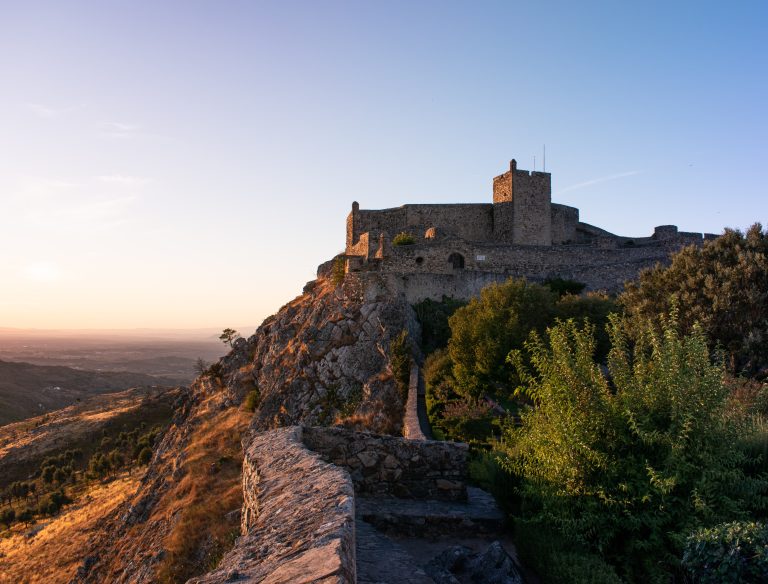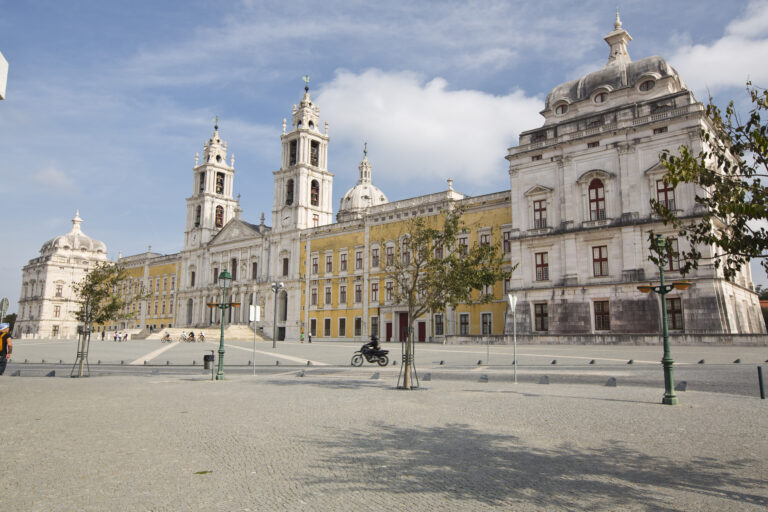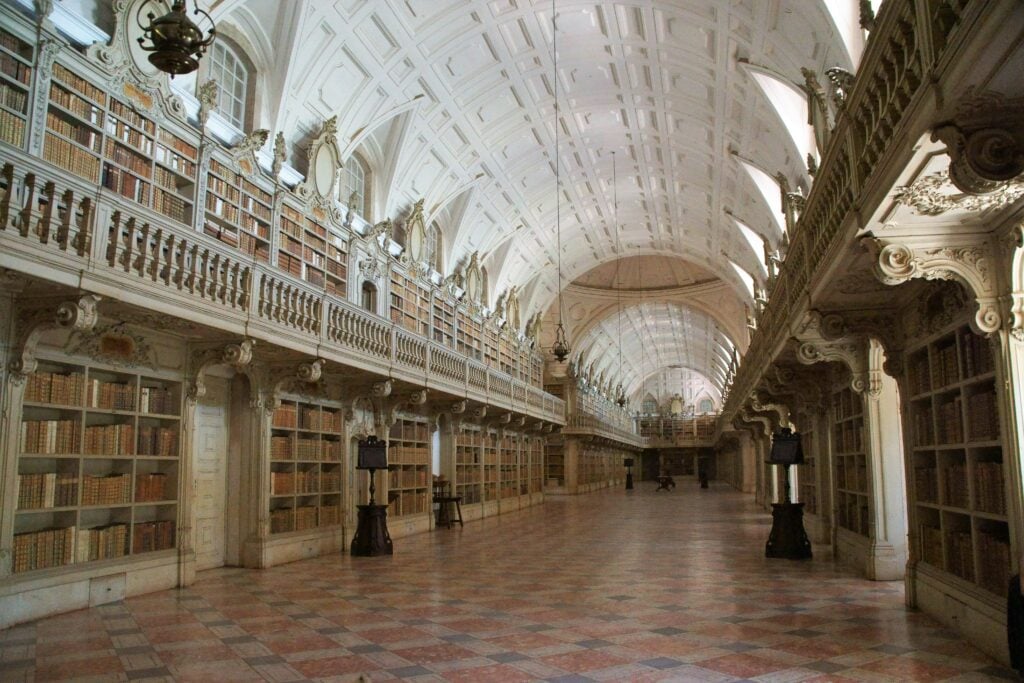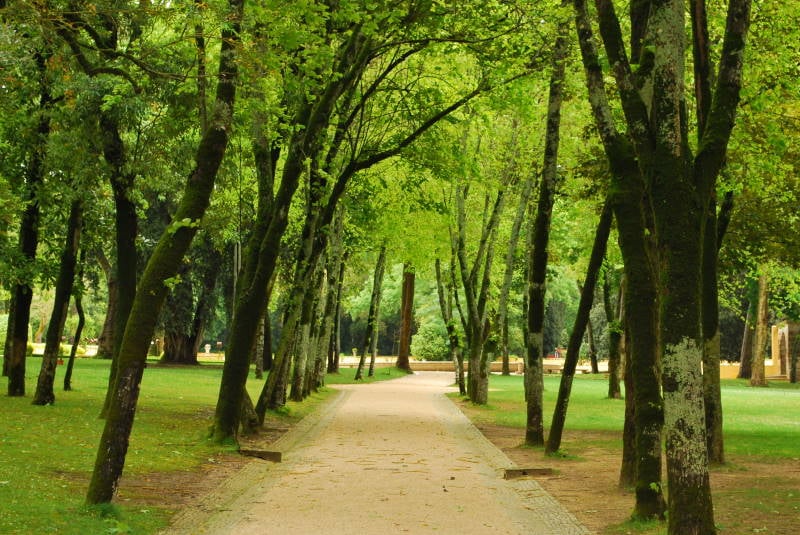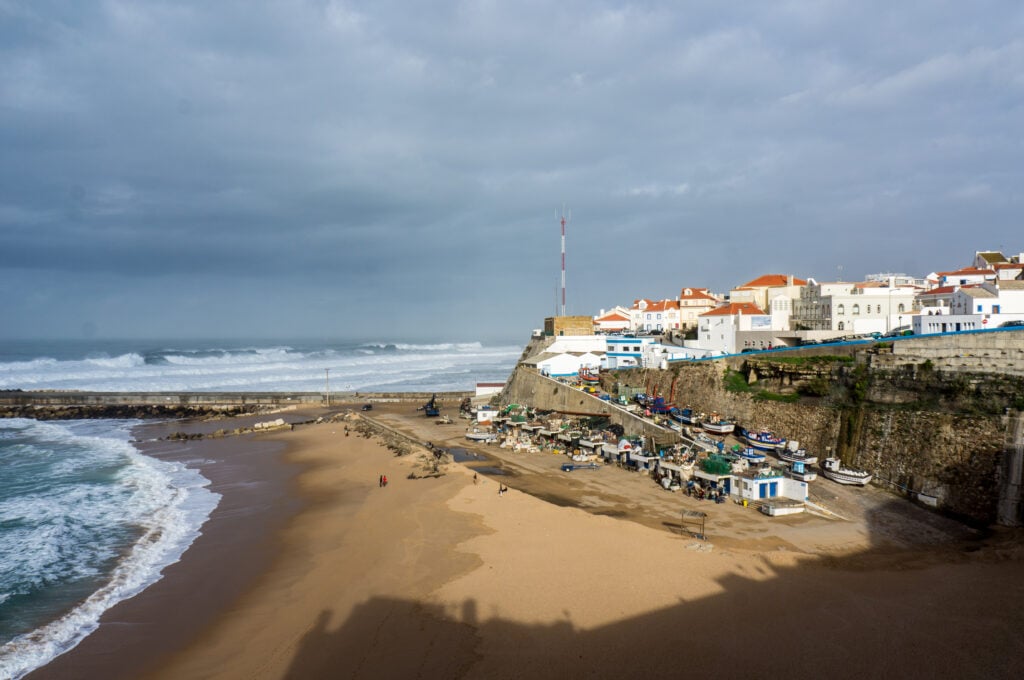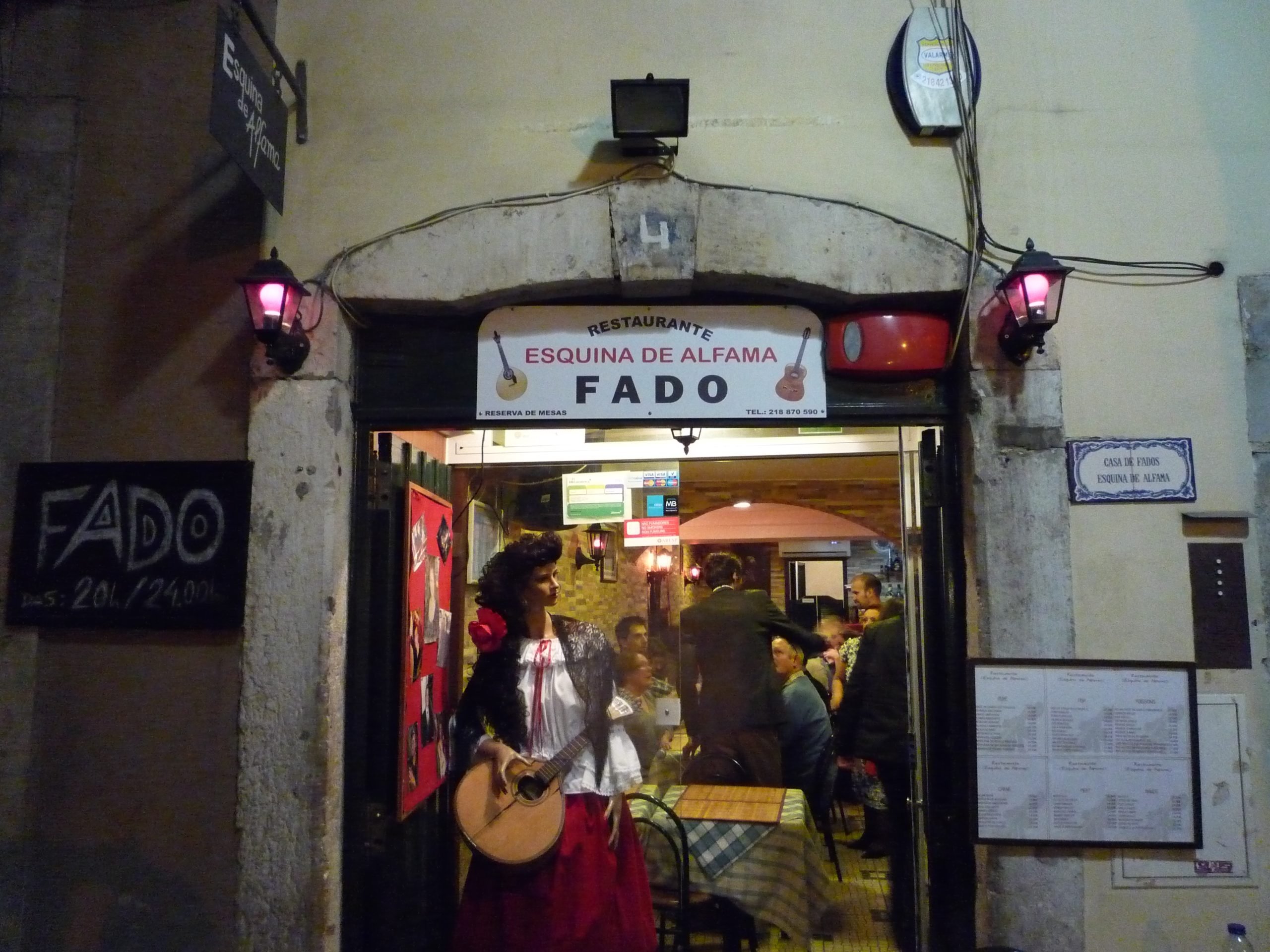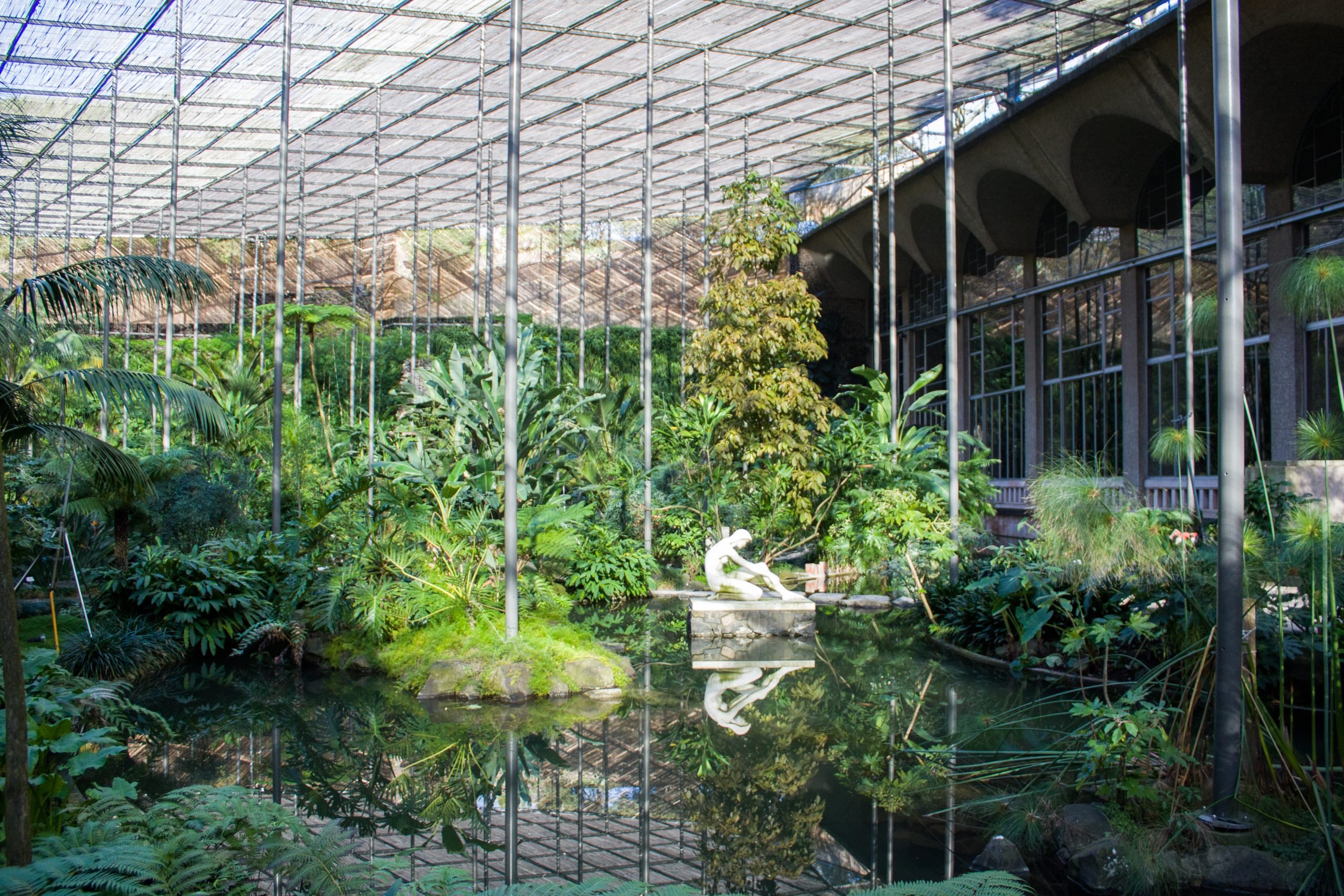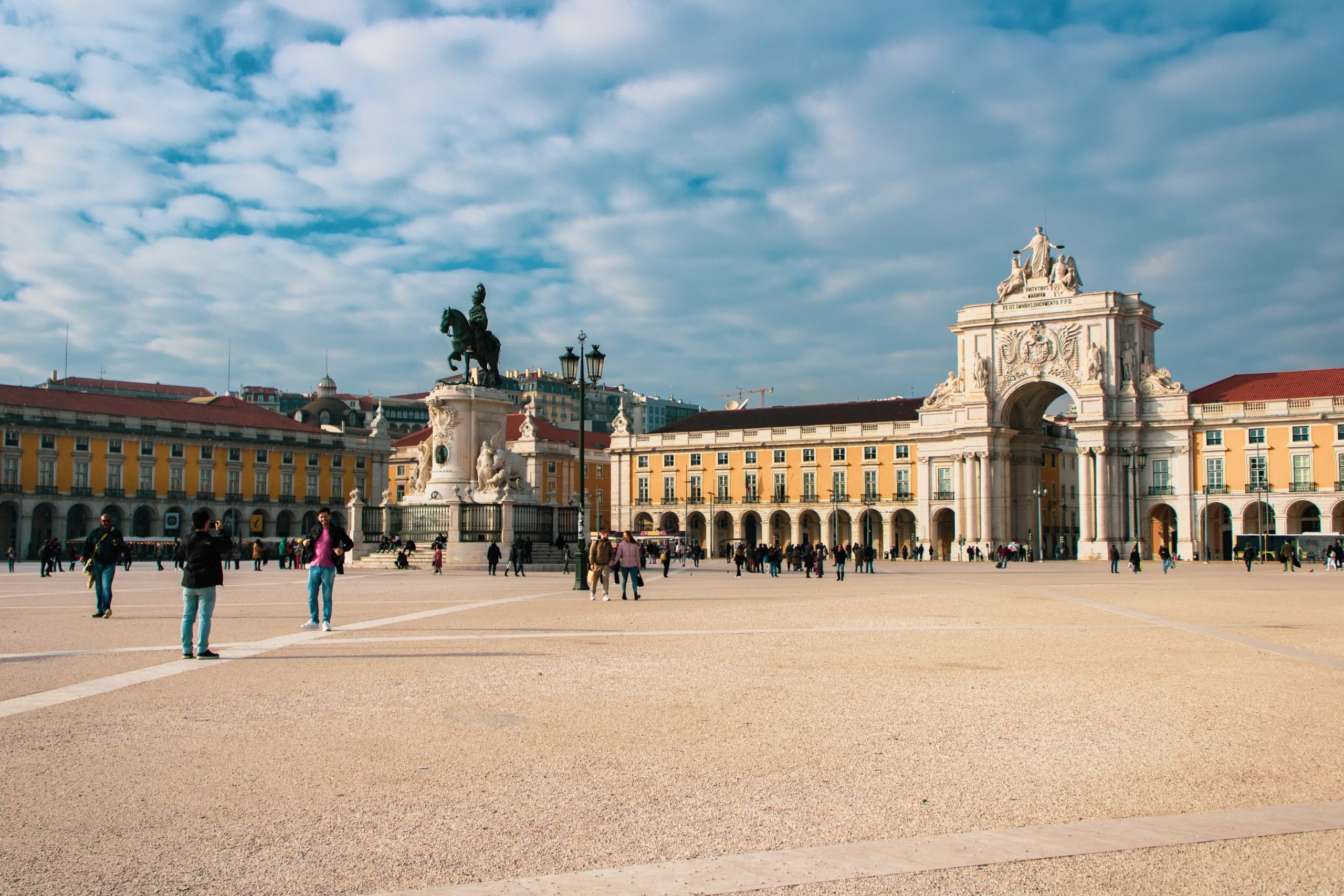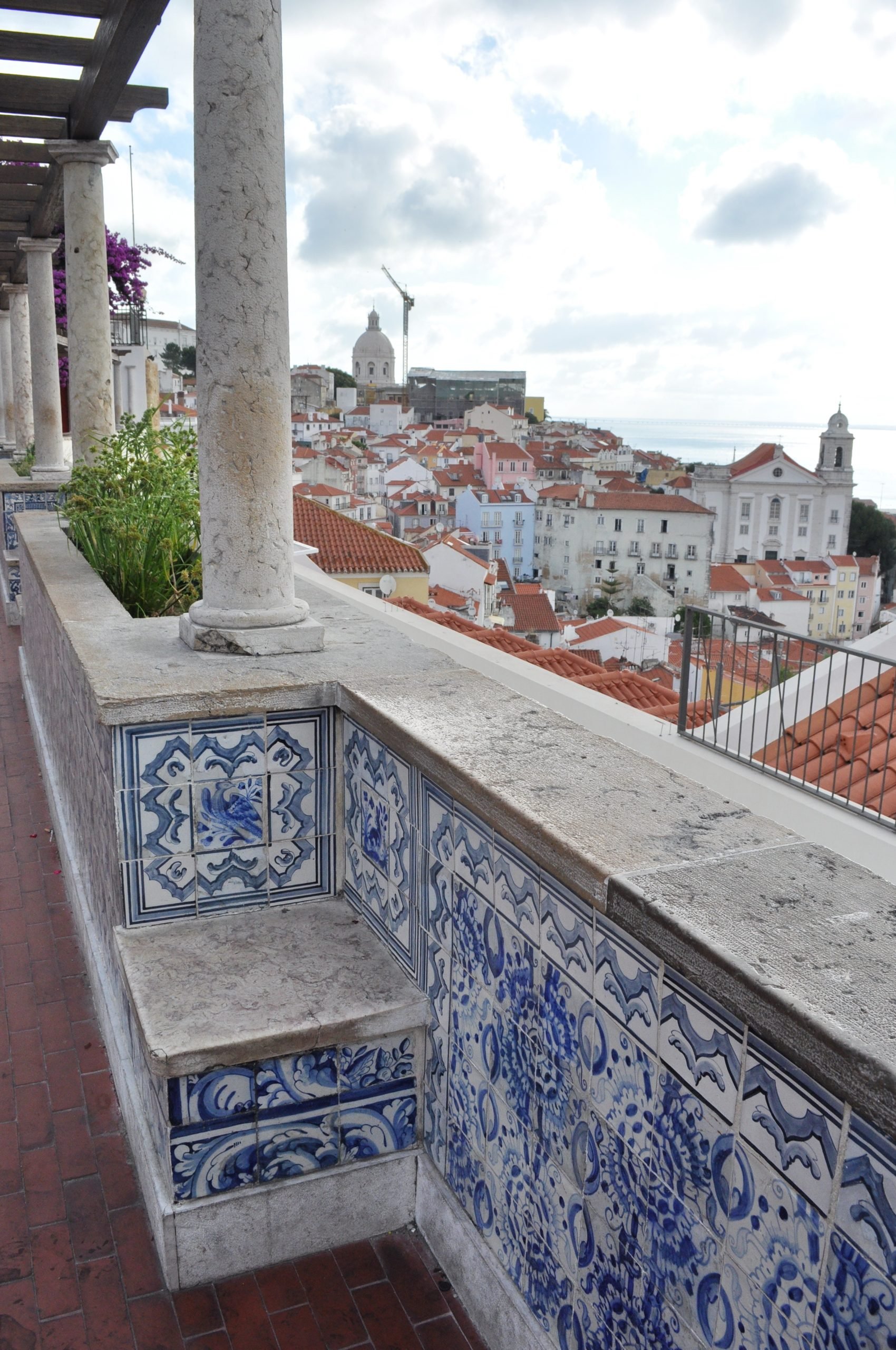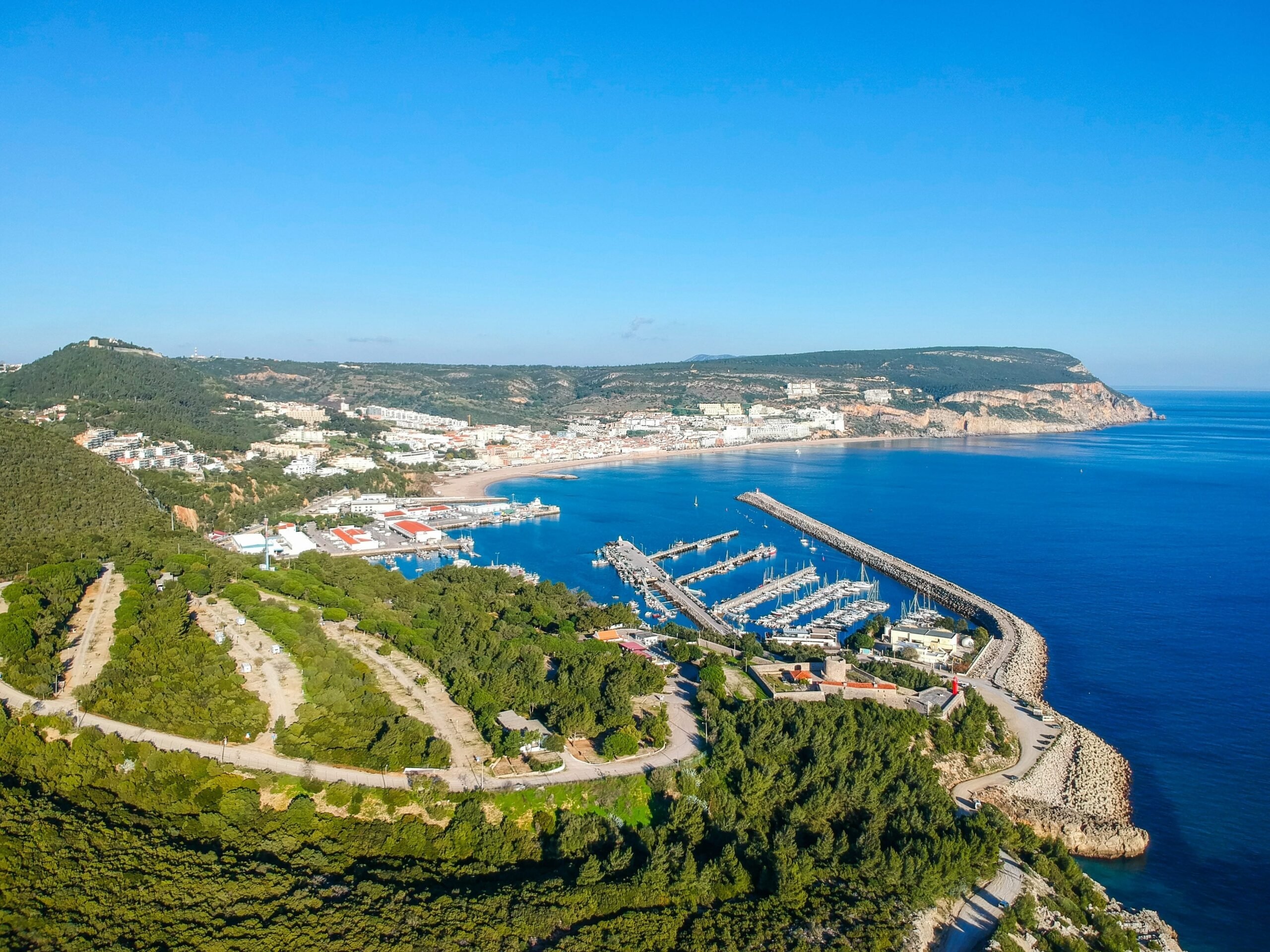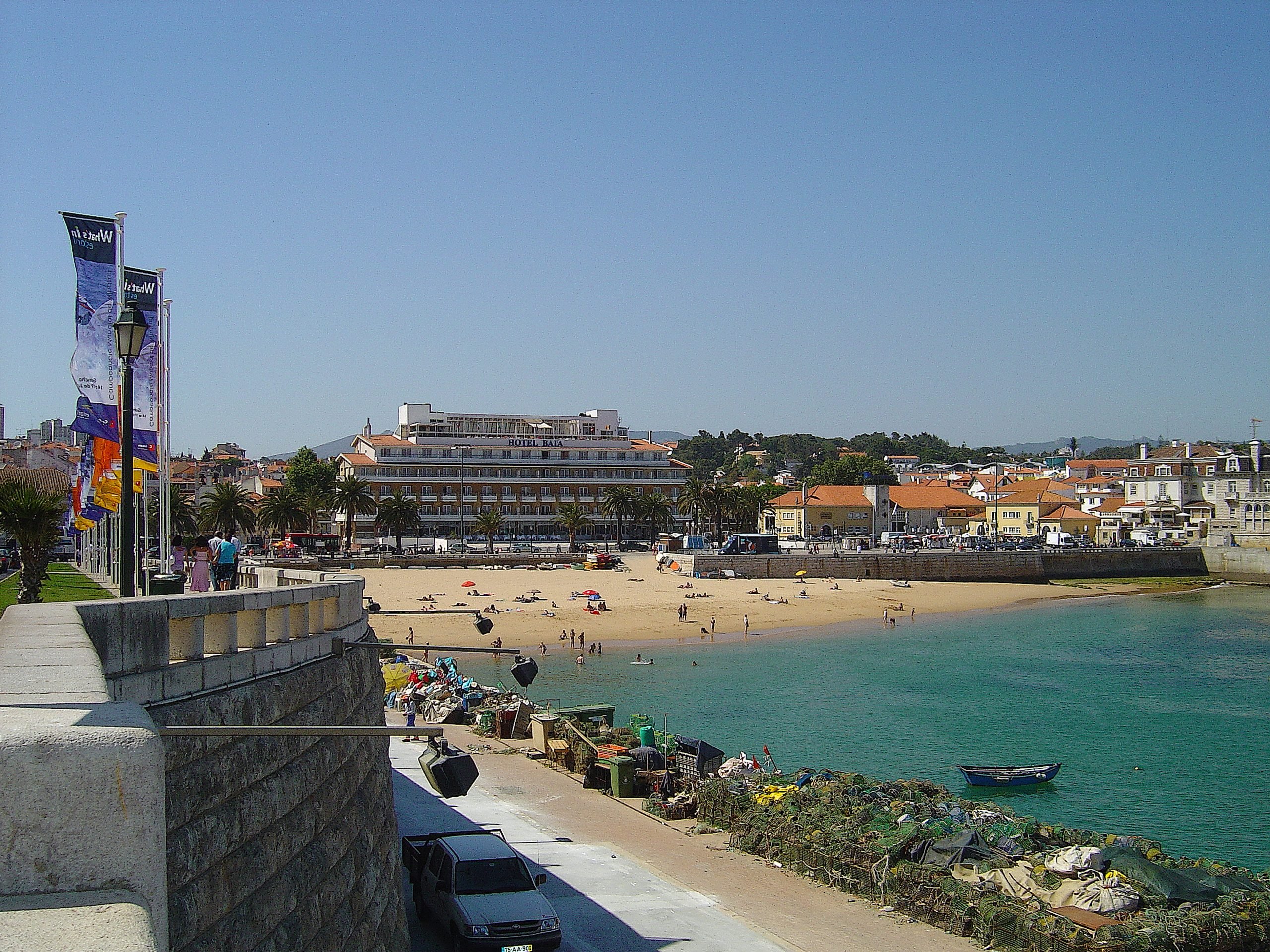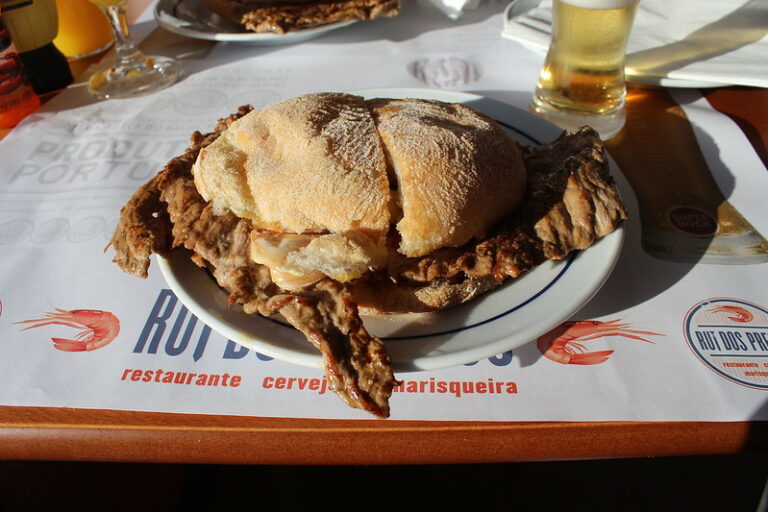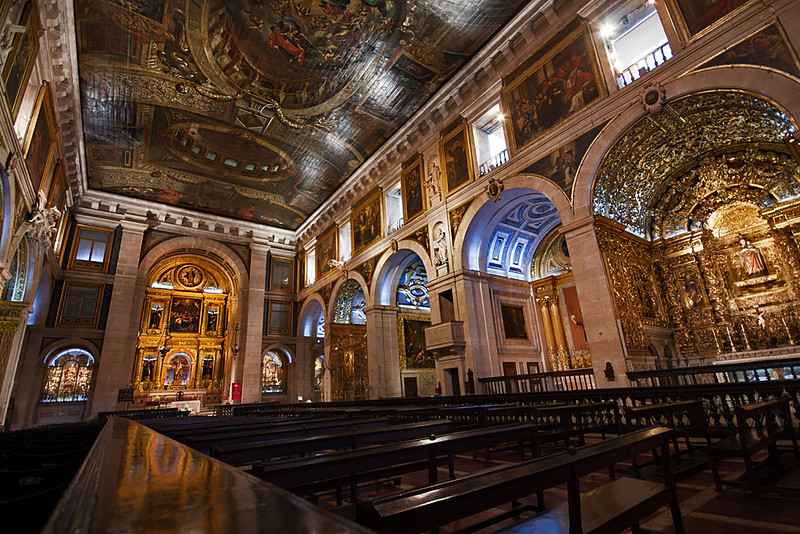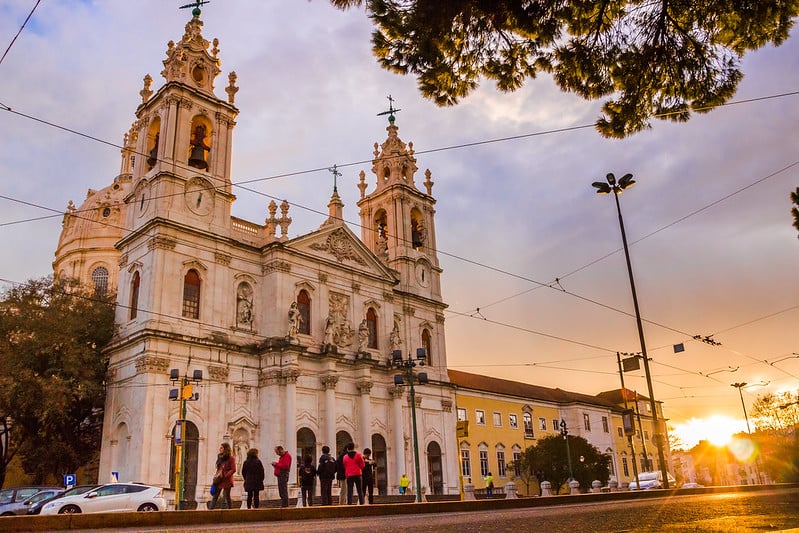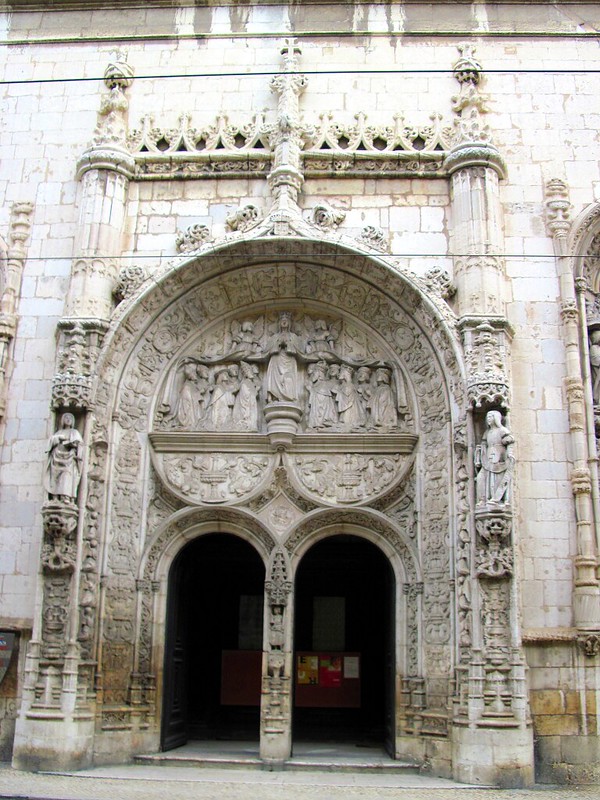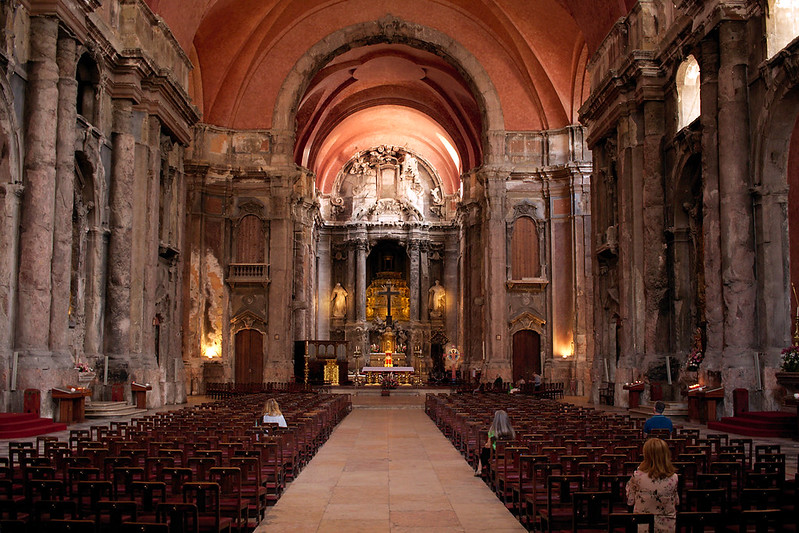You heard about the Nacional 2, the legendary road that cut through Portugal right through the middle, but maybe you’re afraid it might be a bit too congested. You’ve also read about the lighthouse road trip we created along the Portuguese coast, but maybe you’re not a fan of coastal humidity. Well, what if I told you that there’s a third option for you to explore Portugal from west to east and from north to south?
Portugal became an independent country in 1143 when the Treaty of Zamora was signed by Afonso VII, the King of Castille, and Afonso Henriques, who became the first king of Portugal. But it wasn’t all roses and rainbows after that, and the Castilian threat was ever-present in the kingdom of Portugal throughout the centuries. This is why it became crucial to equip the border region with castles and fortresses to protect from and deter possible invasions.
The truth is that this defensive infrastructure has kept Portugal safe, having kept its borders practically intact since 1297, when King Dinis signed the Treaty of Alcanizes with Castille. The only exception to this is Olivença (“Olivenza” in Spanish), which was annexed in the early 19th century and became a Spanish city through the Treaty of Badajoz. But, since this treaty was considered void by the Congress of Vienna, Olivença is legally Portugal’s territory but has never been returned by Spain, making it a contentious issue to this day.
But luckily, nowadays, both Portugal and Spain are members of the European Union and NATO, major trading partners, and the fear of war or invasions is long gone. But the castles are still there, waiting for travelers to conquer them. Visiting the castles in the raia (Portuguese colloquialism for “border”), especially when you do it in succession, will help you understand a lot about military strategy, vantage points, how their locations are meticulous, and how their presence helped mold the cities, towns, and villages around them.
So check your tires, fill up your gas tank, pack a few snacks, and let’s hit the road. Our road trip will take us from the Atlantic Ocean, across the Portuguese border with the Spanish community of Galicia through the Peneda-Gerês National Park, to the northeastern corner of this rectangle of ours, before heading south in an almost-straight line all the way down to the sandy beaches of the Algarve. Excited yet? Let’s get started, then!
Vila Nova de Cerveira Castle
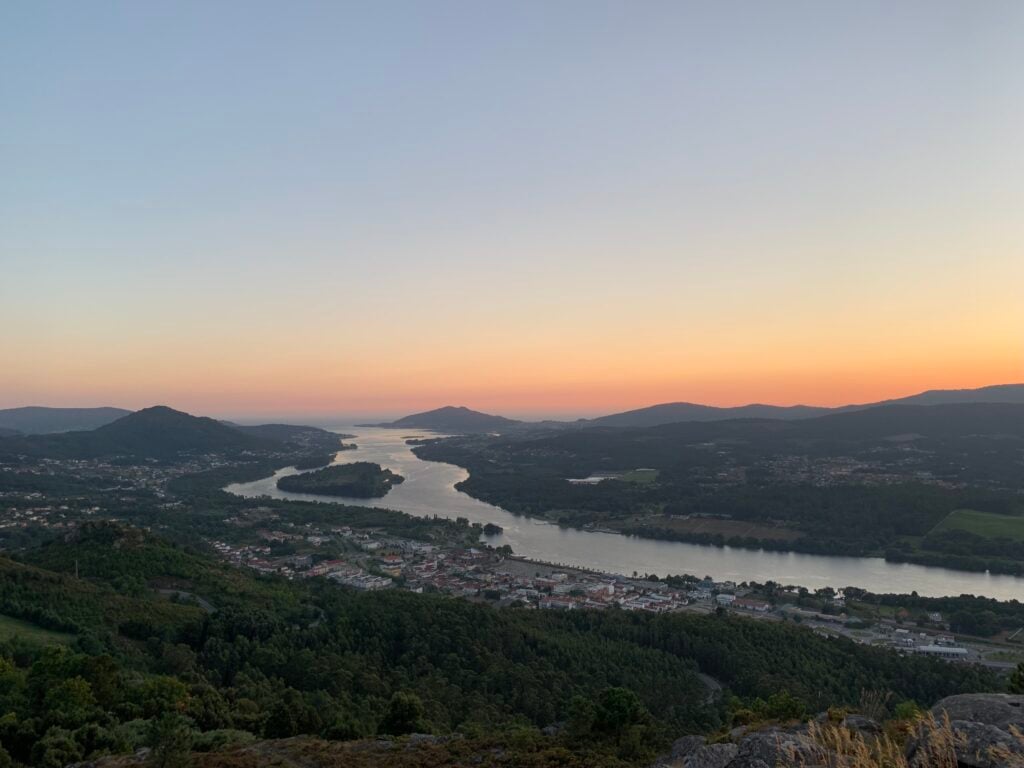
Our journey starts at the castle of Vila Nova de Cerveira, overlooking both the ocean and the border. It is a Gothic castle, small in size and oval in plan. In the 17th century, it was reinforced by a baroque Vauban-style fortress, with only one bastion remaining, but whose organization left its mark on the town’s urban planning. The curtain walls show different construction techniques, which could be due to various periods or later modifications using the stonework.
Vila Nova de Cerveira manifests its greatness in the happy marriage between ancient and modern, history and nature, tradition and contemporary art. Dare to open the little box of surprises in these “Lands of Cervaria”, from the manor houses to the typical houses, from the riverside walks to the viewpoints in the hills, from the eco trail to the nautical activities. And if you add gastronomy to all this, you won’t be short of excuses to explore Vila Nova de Cerveira.
Valença do Minho Fortifications

To visit Valença do Minho is to walk through the history of a living fortress, one of the most emblematic in the north of Portugal, having been the scene of decisive episodes in the country’s independence from the Castilians. Imposing on top of the hill, like an eternal stone guardian, the 17th-century fortress leaves no one indifferent: overlooking the River Minho and facing the Spanish city of Tui as if in eternal defiance. Today they are one, the Valença-Tui Eurocity.
For those with a love of history and Portugal’s origins, visiting Valença is practically imperative, due to the symbolism and rich heritage of the successive monuments you’ll come across as you wander through the streets of the medieval town within the walls of the fortress. Secular emblazoned houses, Minho manor houses, and small palaces attest to the presence of illustrious families. Adorned churches, chapels, and hermitages testify to the generous devotion of its people.
Melgaço Castle
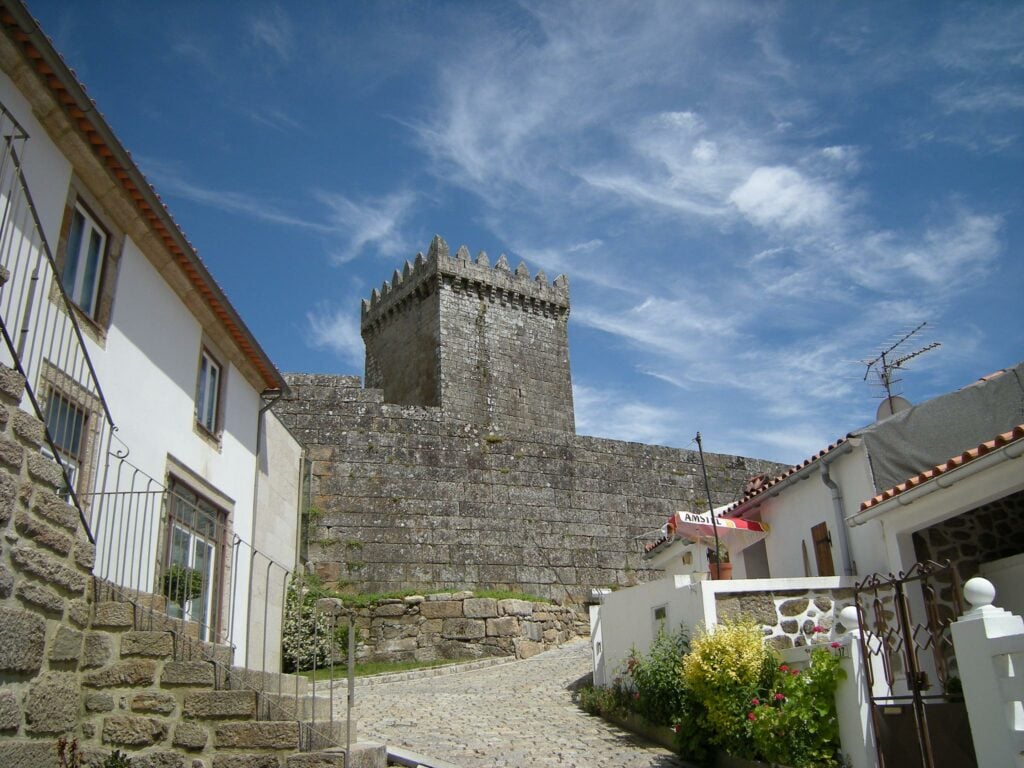
At the top of a hill overlooking the town, we find this ancient fortification, a testimony to the first moments of Portuguese nationality. Located on a former watchtower, it offers superb views over the surrounding mountains and the historic town center, with its narrow streets and stone houses. Strolling along the ramparts, visitors feel like they’ve been pushed into the background, such is the grandeur of the structure and the views it offers. Built to reinforce the authority of the newly created kingdom of Portugal, this castle played an important role in defending the Alto Minho border.
The town of Melgaço is probably the most unknown town in Portugal. Incidentally, it is also the northernmost town in the country. It has a valuable historical heritage with traces dating back to prehistoric times and the beauty of the natural landscape is sublime, were it not for the fact that Melgaço is part of the Peneda-Gerês National Park. The rivers (Minho, Laboreiro, Varziela), the fishing grounds, adventure sports, the mountains, and the historic villages are just some of the points of interest in Melgaço that make this land a discovery in itself.
Montalegre Castle
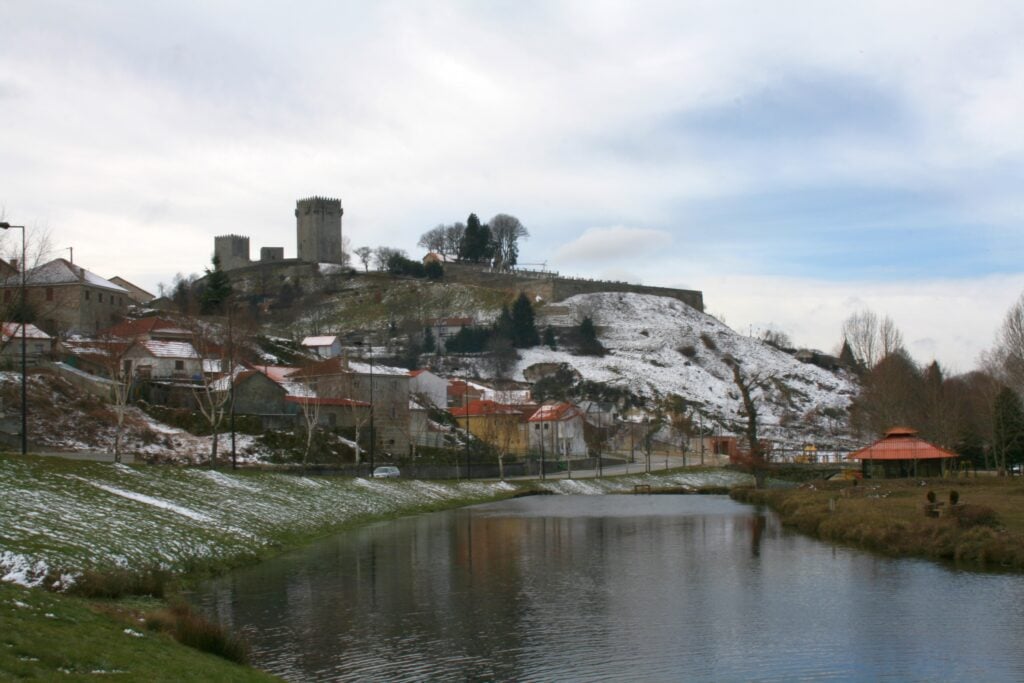
Built during the reign of King Afonso III, its construction also spanned the reigns of King Dinis and King Afonso IV, being completed in 1331. It consists of four imposing square towers, interconnected by walls that surround the square of arms, where the medieval cistern is also located. At the time of King Manuel I, restoration work was carried out and completed in 1580. During the Restoration Wars, a surrounding wall with a moat was built, which has since been partly absorbed into the town’s urban fabric.
Located in Trás-os-Montes, in the valley of the river Cávado, between the mountains of Gerês, Barroso, and Larouco, Montalegre is surrounded by quiet and welcoming villages where agriculture and livestock farming dictate the pace of time. The capital of the Barroso region, a title it proudly bears, the town in Trás-os-Montes is famous for its delicious gastronomy, where smoked meats reign supreme, for its popular Friday the 13th celebrations, culminating in the effusive Halloween Nights, and for its traditional medicine.
Chaves Castle
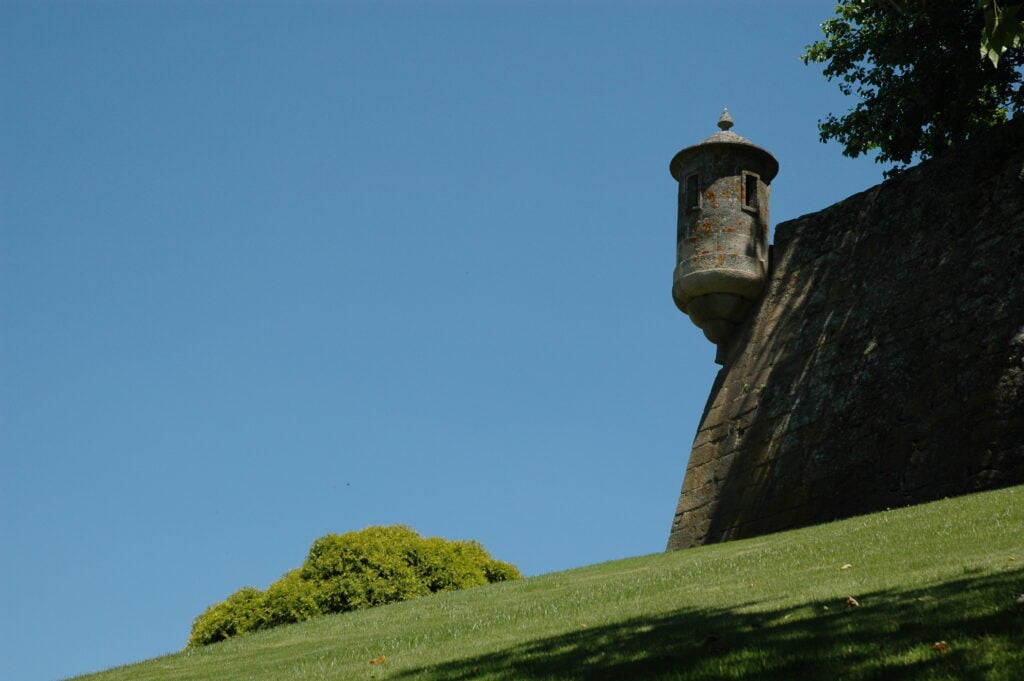
With medieval features and a rectangular floor plan, it was built on the foundations of the Roman walls that surrounded the town. It underwent major improvements, both by the Suevi, Alans, and Visigoths and even by the Muslims who conquered the fortification in 713. The construction of the keep and other improvements to the defensive structure date back to the reign of King Afonso III, and were completed during the reigns of King Dinis and King Afonso IV.
If you read our article about the Nacional 2, you’ll be familiar with Chaves, since it marks the start of that road trip. Deep in the north of Portugal, just a few kilometers from Spain, in a fertile and graceful valley around the river Tâmega, this pearl of Trás-os-Montes is certainly in contention for the title of the most beautiful city in Portugal. I know it’s open to debate, but what is indisputable is that in a city as old as Chaves, each stone could tell a handful of stories as captivating as the history of Portugal.
Bragança Castle
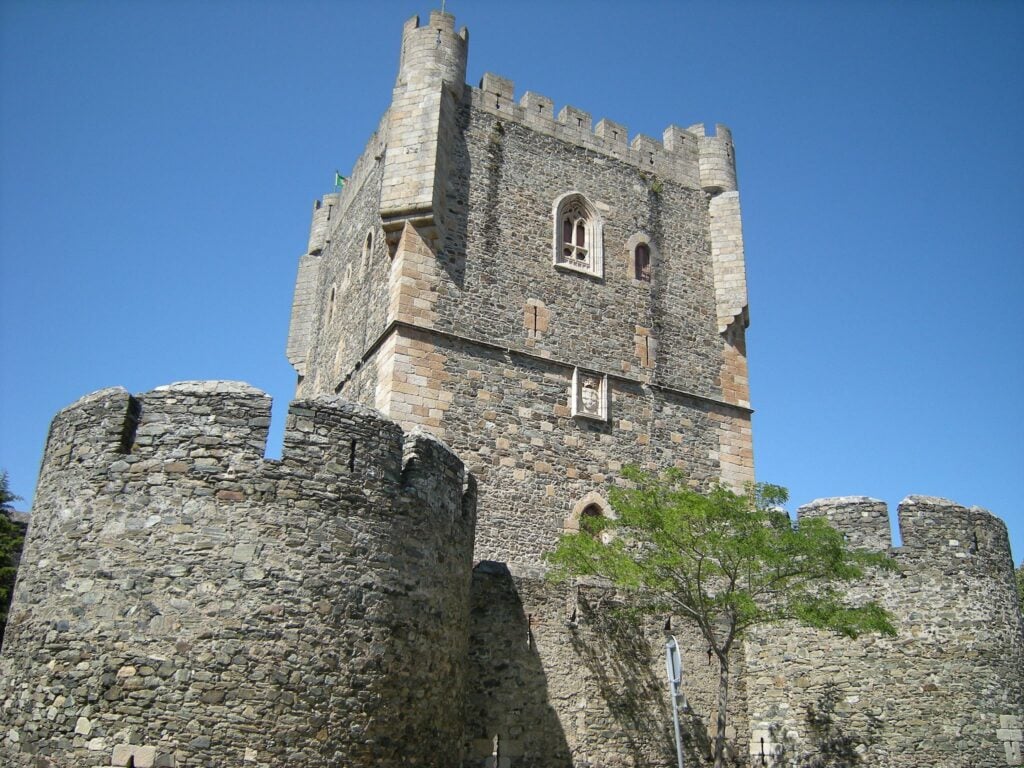
One of the most important and well-preserved Portuguese castles, it is medieval in style, Gothic in style, and has a striking image in the area and the city, thanks to its size and the imposing keep. From the top of its walls and tower, you can see a vast expanse of land and the Montesinho mountain range. The keep, built of schist masonry with wedges, spans, and structural elements in dressed granite, has several floors in barrel vaults reinforced by full arches. The top of the tower is majestic, with cylindrical sentries at the apexes, battlements, and crossed arrowheads.
This municipality in the north of Portugal was crucial in the defense of the Portuguese border and carries a historical legacy of great importance in the constitution of nationality. Celts, Romans, Arabs, and other peoples occupied the territory and even neighboring Castile coveted this piece of cold land in Trás-os-Montes. Since 1187, its strategic importance has been recognized with a special charter by several Portuguese monarchs, and in 1464 it was elevated to city status. Today, it’s the capital of one of Portugal’s eighteen districts.
Miranda do Douro Castle
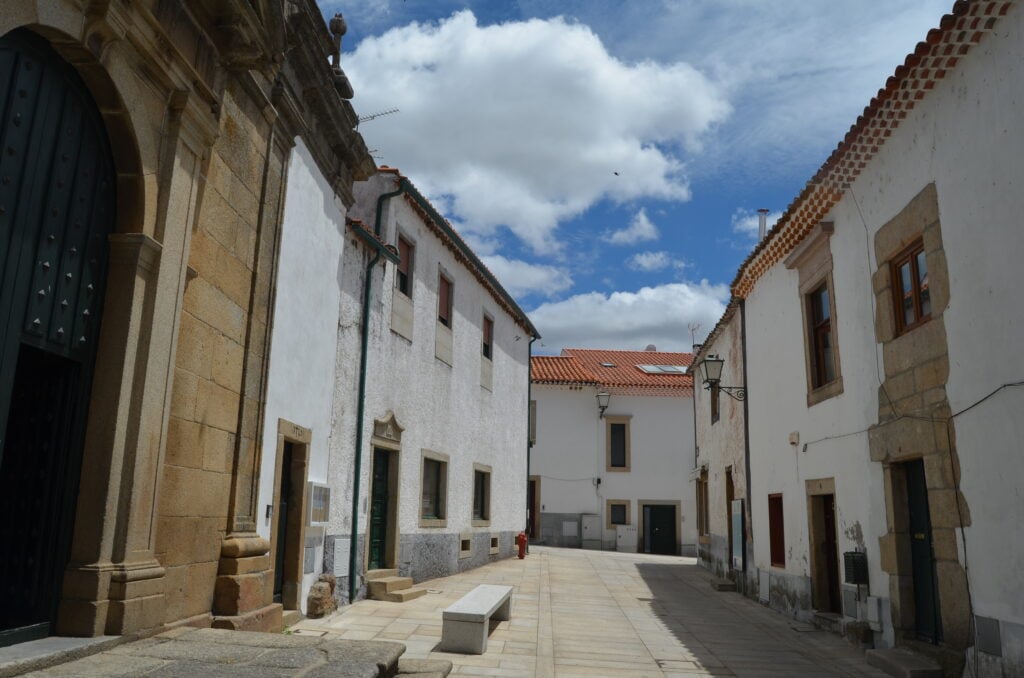
The castle dates back to before Portugal was a nation and was the subject of interventions in the early reigns of the first dynasty, including a walled enclosure designed to protect the population. The main structure dates back to the reign of King Dinis. It is Gothic in style and has an irregular rectangular plan, with a keep at one angle and three other lower towers, two with a square base and one with a hexagonal base. In 1762, during the Seven Years’ War, there was a violent explosion in one of the armories, which disfigured fundamental elements of the castle’s Gothic structure and a large part of the wall.
Did you know that Miranda do Douro sees the sunrise before the rest of Portugal? That’s because it’s the easternmost town in the country. Do you know what else makes it unique? It has its own language, the mirandês, which is an endangered language exclusive to this town, giving it a whole other layer of uniqueness. And let’s not forget the Mirandese gastronomy, which includes as ex-libris dishes the Miranda steak, Miranda veal, Miranda lamb, and pork with all its derivatives, with tabafeia being the most famous of them all.
Freixo de Espada à Cinta Castle
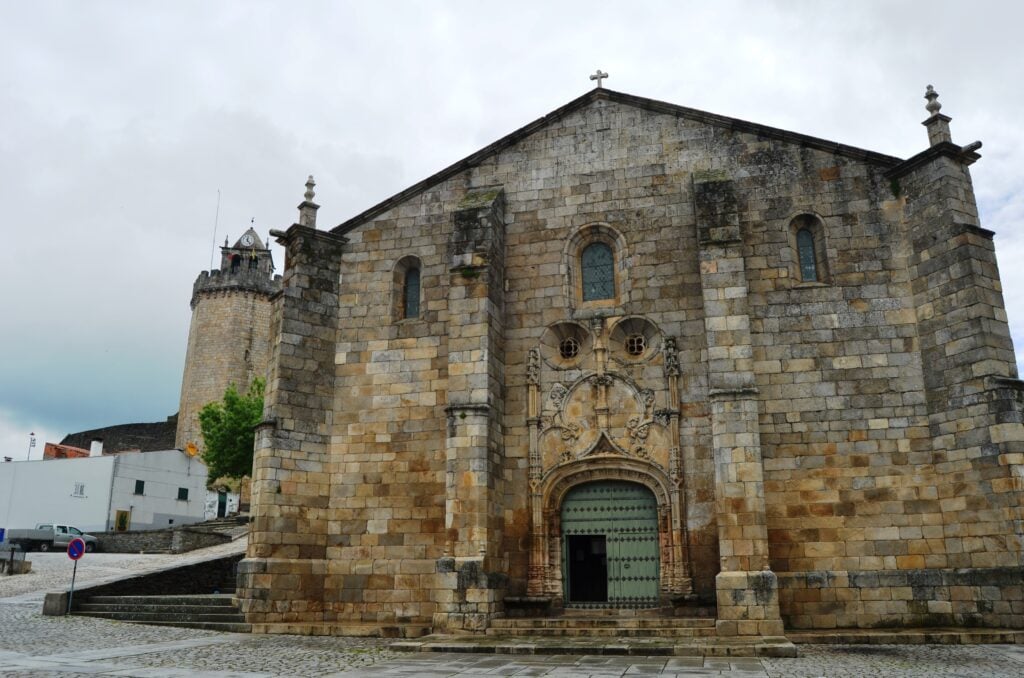
One of the oldest fortresses in Trás-os-Montes, it marked the border to the west of the River Douro and was built in the 12th century, with a primitive redoubt with a fence defending the town. In 1836, the enclosure was converted into a municipal cemetery, and some walls were demolished. Today, the unique heptagonal tower (known as the Rooster Tower or Clock Tower) and some sections of the walls remain.
The name of the town itself is enough to arouse curiosity. It literally means “sword on the belt of an ash”. Visiting Freixo de Espada à Cinta is a trip down memory lane to ancient Portugal. The one that was made from the north, far north. Well-loved by those looking for the hidden gems of this country of wonders, those that still preserve the authenticity that takes us back in time, to the roots of the Portuguese heritage and soul.
Castelo Rodrigo Castle
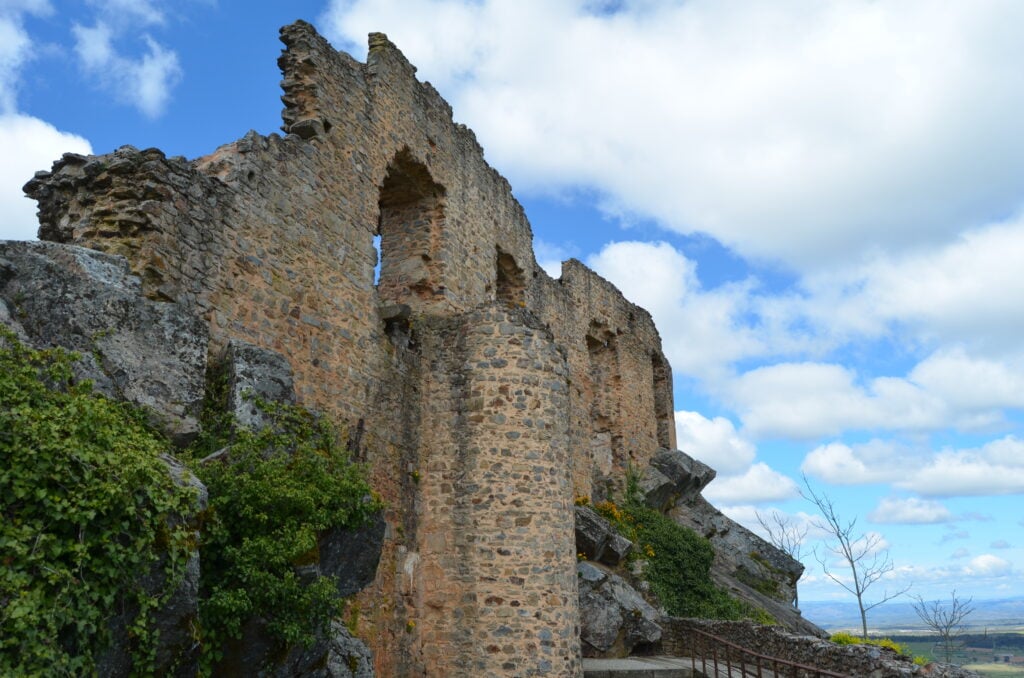
Built on schist cliffs to the west of the Marofa and Vieira mountains, dominating the extensive plateau territory, it was conquered by King Dinis in 1296. The castle has an irregular floor plan and is made up of a castelejo and barbican marked by semicircular cubicles and rectangular towers, with full, broken-arch doors. The Alcazaba was repurposed as the mayor’s residential palace, remodeled in the Mannerist period and later razed to the ground by the population, but some structures with rectangular courtyards remain.
This land of enchantment has so much more to offer: it is one of Portugal’s most exciting Historical Villages, the gateway to the Douro International Natural Park, it displays stunning landscapes of the Lands of Ribacoa of incalculable value, it has revealed cave paintings that prove its prehistoric origins, it has inherited a vast Roman, Arab and Jewish legacy and it is, historically, one of the most important towns in the region in the defense of the Portuguese territory disputed with Spain.
Almeida Fortifications

The original castle, built on a plateau in a strategic position, was built by the Muslims, conquered by the forces of the Kingdom of León, reconquered again by the Muslims, and finally by Portuguese forces. In the post-restoration period, Almeida modernized the obsolete medieval structures and built a fortress around the urban perimeter of Almeida, its Praça Forte, a perfect example of Baroque military architecture, with a hexagonal star layout, six bastions, and six ravelins.
Almeida is one of the best examples of a bastioned fortification in Portugal. When seen from the air, Almeida’s Praça Forte looks like a 12-pointed star, as many as the bastions and ravelins that surround it. Needless to say, Almeida has been the scene of epic battles, one of the most famous being the Siege of Almeida in 1810, during the Third French Invasion. If you visit the city in August, don’t miss the historical re-enactment of this event. Just make sure you take some earplugs, as the noise of the cannons is deafening.
Sortelha Castle
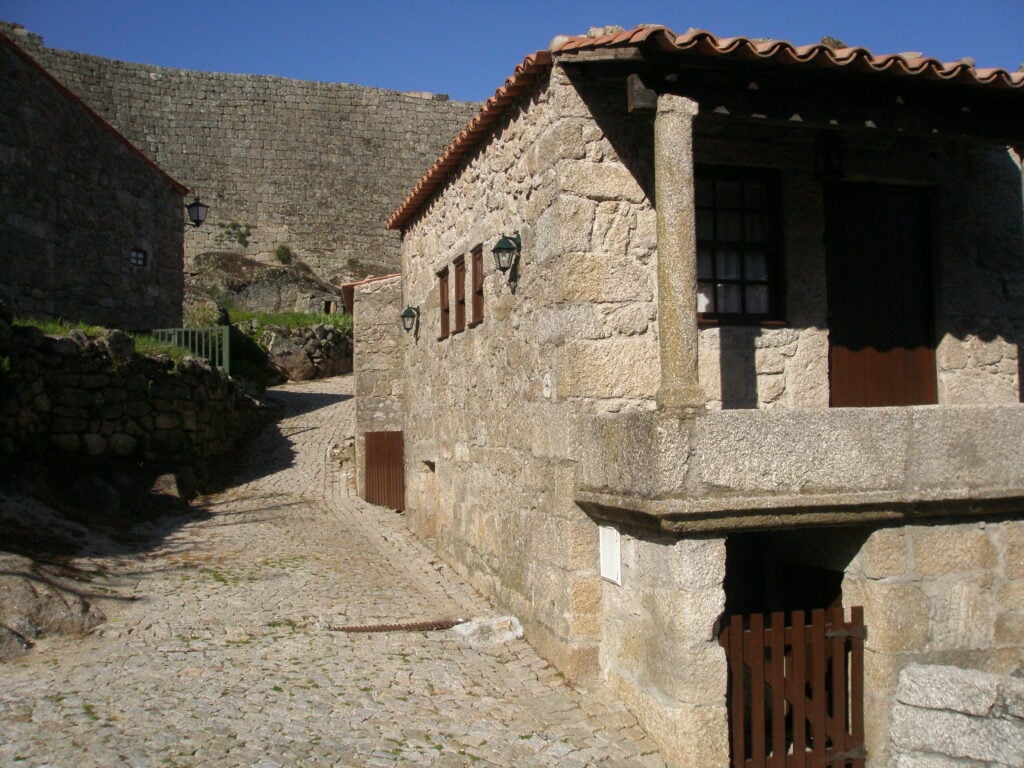
This one’s not exactly on the border, but since it’s one incredible castle, it’s well worth the 20-minute detour to reach it. The Sortelha Castle is the latest of Beira Interior’s Romanesque castles. It stands on an impressive granite massif, slightly offset from the town, and still retains much of its original structure. In the 20th century, restoration work on the complex was mainly responsible for the monument’s current image. Between 1940 and 1952, many parts were rebuilt, in a process that aimed to partially revive the castle.
Sortelha is not only one of the best-preserved historic villages, but it also has a simply stunning landscape. From the top of its towers and walls, you get simply overwhelming views over the rugged Beira landscapes. As you pass through the walls, which have protected it for centuries, you’ll feel like you’re in a real open-air museum. Walk slowly and savor the nostalgic medieval atmosphere of the village.
Marvão Castle
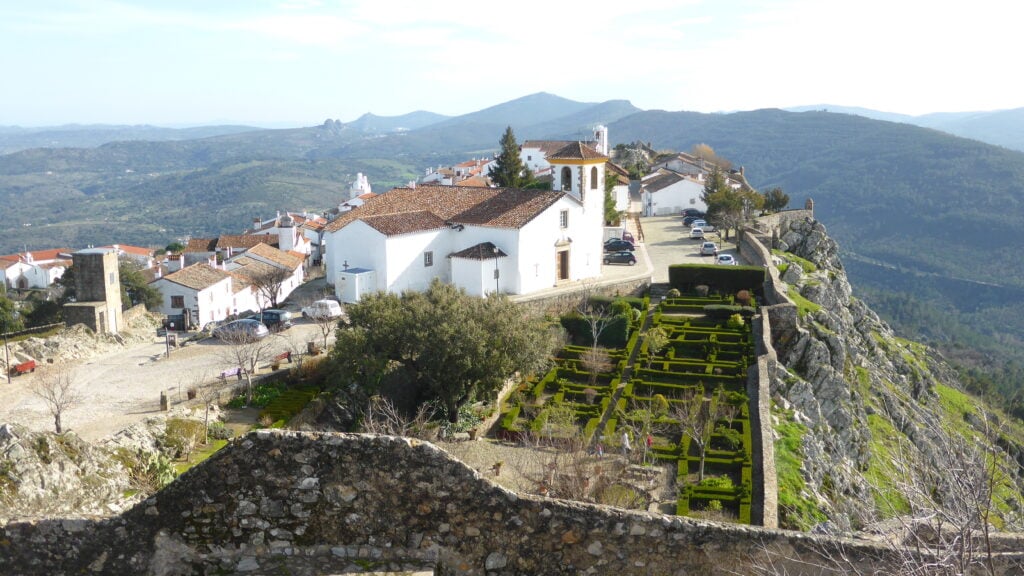
Standing at the top of the Serra do Sapoio, in the heart of the Serra de São Mamede Natural Park and one of the main access points to Portugal, holding a dominant and strategic position on the border and the surrounding area, the Marvão Castle, built on a rocky platform, encloses the medieval town within its walls. These, reinforced by towers, are divided into three concentric defensive lines: the inner line with two towers and a cubicle, dominated by the keep, the middle line reinforced by massive towers and the outer line consisting of the barbican, from where the fence that surrounds the hill and integrates the town starts.
There are more than 800 meters of elevation. More than 800 years of history. More than 800 enchanting features. The majestic walled town of Marvão is so fascinating that it is never forgotten by visitors. Anyone who climbs up to Marvão Castle will understand why José Saramago said that, from there, “you can see the whole earth”, almost immediately. There, from the top of the castle, we are taken aback by the extent of the wonderful landscape of the Serra de São Mamede. As far as the eye can see. Breathtaking.
Elvas Fortifications
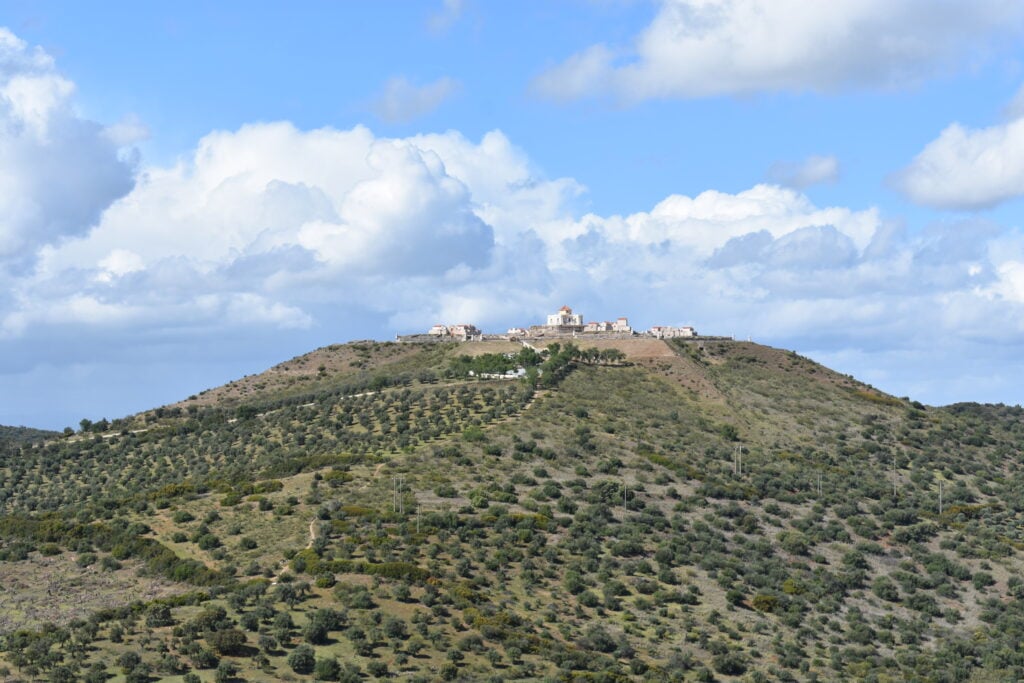
It was originally an Islamic fortification and was an important strategic point for defending the national border. The keep was rebuilt in 1488, but its current appearance dates from the 16th century. With no military function from the second half of the 19th century onwards, the castle of Elvas was left abandoned and entered the 20th century in ruins.
That’s why several Elvenses who loved history and their heritage wanted to promote its restoration and visibility and started a process that would make the castle of Elvas the first Portuguese National Monument in 1906. In 2012, the “Garrison Border Town of Elvas and its Fortifications” were classified by UNESCO as a World Heritage Site.
At the gates of Spain, just eight kilometers from nearby Badajoz, Elvas has become the most important stronghold on the Portuguese border and is today one of the most emblematic cities in the Alentejo. Its historic center, Islamic, medieval, and 17th-century walls, the forts of Santa Luzia and Graça, three fortresses, and the Amoreira Aqueduct make up the largest bastioned fortification in the world.
In terms of religious heritage alone, the municipality of Elvas has nearly forty churches and convents, not including hermitages; architectural heritage, just wandering the streets; and the civil heritage totals more than thirty examples, including fountains, arches, and pillories.
Monsaraz Fortifications
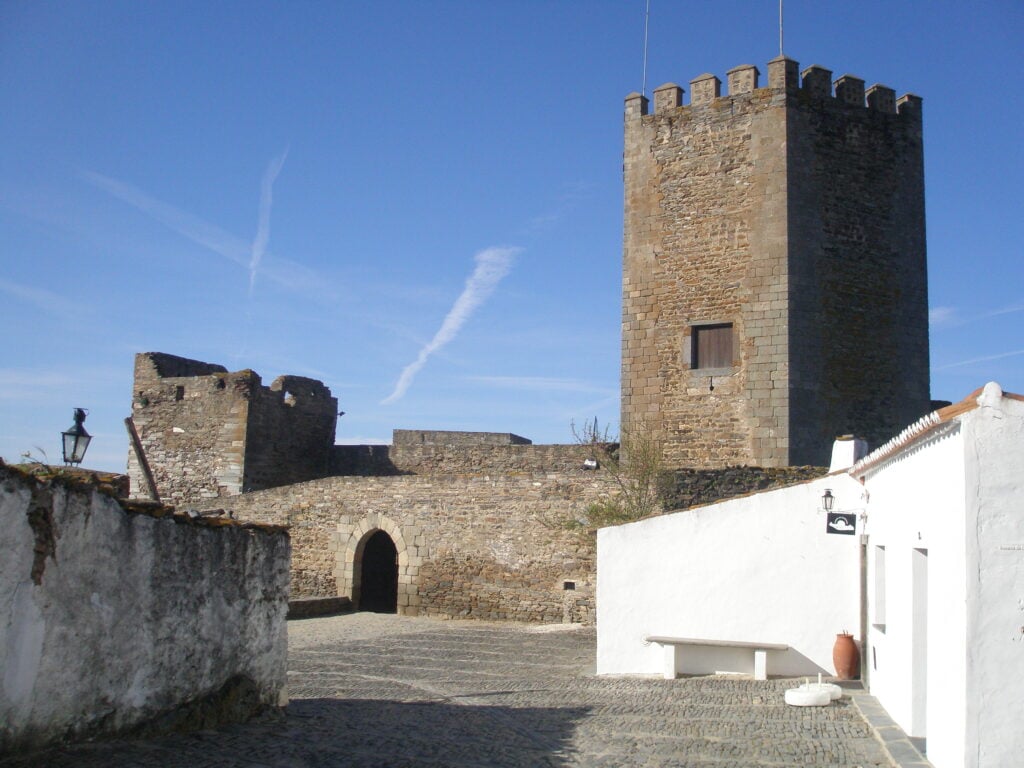
Considered one of the oldest towns in Portugal, Monsaraz shows signs of settlement since prehistoric times and was initially a fortified settlement. During the Restoration Wars, due to Monsaraz’s proximity to the Guadiana and the Spanish border, the Crown had a new fortress built around the town. The project included the construction of a new wall comprising the Fort of São Bento, the “defensive key to the Arrabalde“, with a bastioned reveille and artificial curtain wall, the Fort itself, in the shape of a star, the Baluarte de São João and the Baluarte do Castelo.
Monsaraz is a surprise every time it is kissed by the intense Alentejo sun on the shores of the great Alqueva Lake. The earthy tones and the rough look of the schist stone are countered by the whiteness and neatness of the whitewashed houses. At the top of this steep slope, within walls as old as age, there is a very distinctive character where legends, memories, traditions, and ancient knowledge are preserved. Monsaraz can be reached in minutes, from one end to the other. However, it’s impossible to escape the urge to simply stay there, with all the wanderlust in the world.
Noudar Castle

Strategically well-located, the Noudar Castle was completed in 1308 and subsequently underwent several repairs. Its geographical situation does not require the existence of a moat, given the surrounding land with a very steep slope, flowing towards the Ardila and Múrtega rivers. Like so many others, it is assumed that the initial fortress consisted of a proto-historic settlement, with subsequent Roman occupation. From the 18th century onwards, the history of this castle is one of progressive abandonment, completed in 1893. It was only in 1997, more than a century later, that the municipality managed to acquire the complex.
Noudar, in the Barrancos municipality, preserves its beautiful castle surrounded by the river Ardila, which ripples through the surrounding landscape. The park of the same name is a beautiful place, almost untouched by man, and its fauna and natural landscape are its greatest attributes. In Barrancos, the elderly speak the Barranquenho dialect, a mixture of Spanish and Portuguese, which is a clear sign of the connection to Spain, as are the bullfights with the killing of the bull, being the only place in Portugal where this is legal.
Serpa Castle and Walls
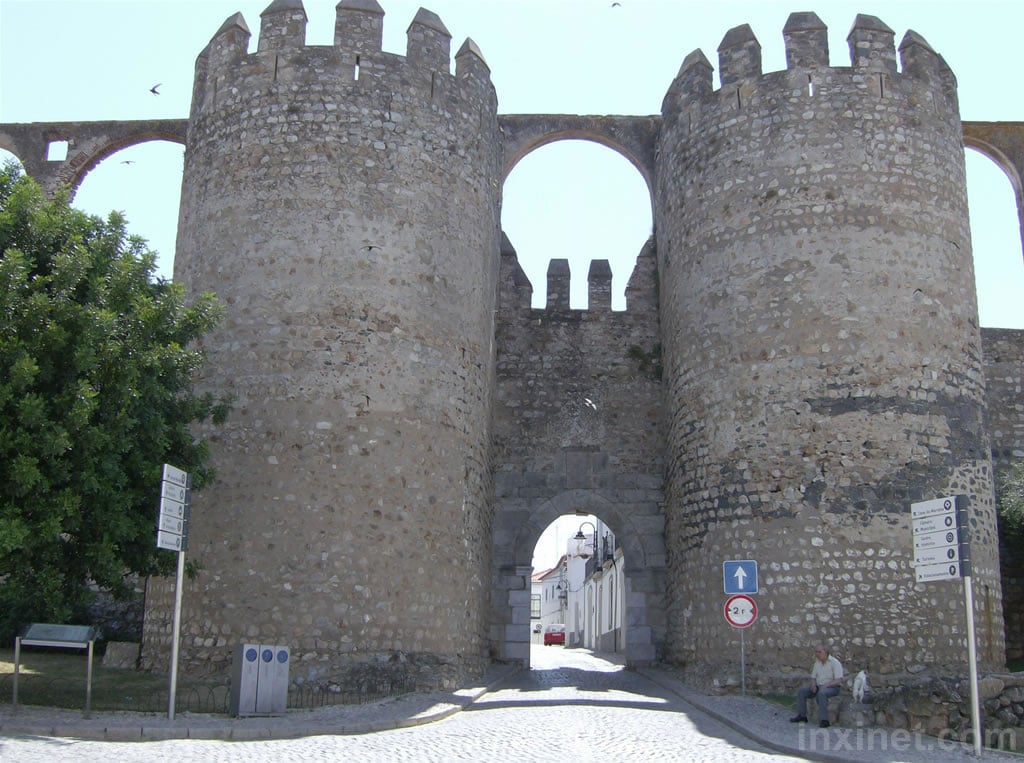
The first impression one has of Serpa is the sight of the castle’s grandiose walls where the Moura and Beja Gates, the only survivors of the 5 primitive gates, are placed. Inside the wall on the east side, there is the vast manor house of the Counts of Ficalho, also highlighting the Italian arcade aqueduct that extends to the end of the south wall. The highest part of the hill corresponds to the primitive, medieval, Moorish, and Christian urban nucleus. Here you will find the church of Santa Maria, what remains of the castle’s old keep, the Clock Tower, and Serpa’s Municipal Museum of Archeology.
This town in the Alentejo region, enclosed by the walls of its medieval castle, which was central to the defense of Portugal, serves up a feast of surprising experiences and feelings. After the first “taste”, Serpa leaves you wanting more. Heritage, landscape, people, and local culture are one and the same. An open museum that invites you to (re)discover its charms and values. Oh, and did I mention its famous, creamy, delicious cheese?
Castro Marim Castle and São Sebastião Fort
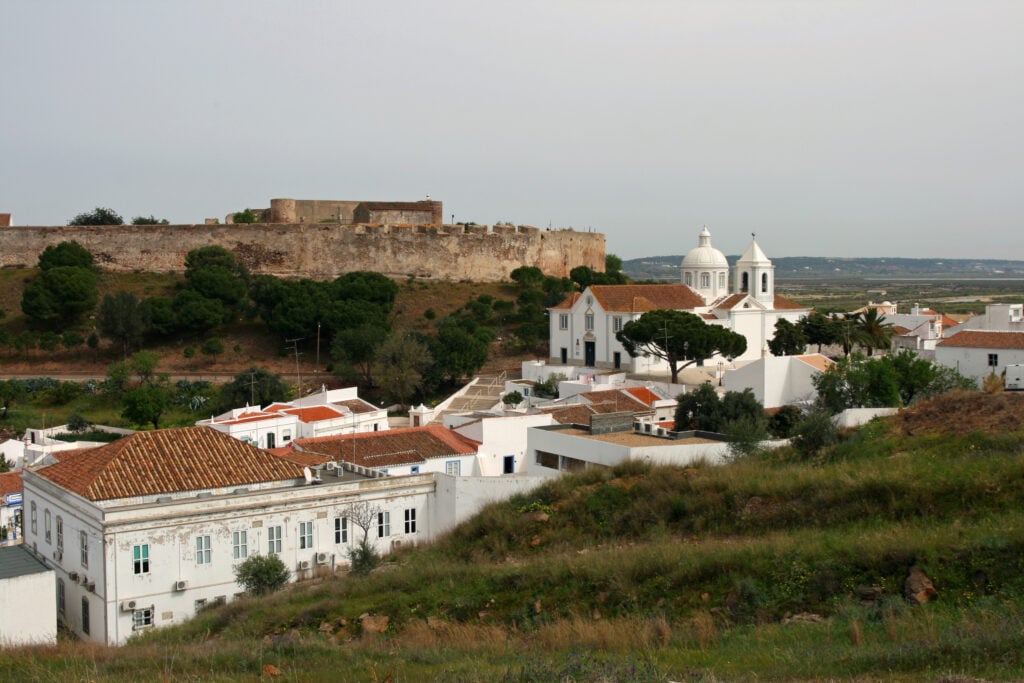
The castle of Castro Marim has a quadrangular plan, with four cylindrical blocks and two access doors, one of which is topped with a coat of arms and an epigraphic inscription. The keep, with a quadrangular morphology and an imposing structure (three floors high), was built attached to the south wall, with the aim of protecting the main access to the castle. Under the shelter of the barbican, with a triangular plan, covered by a fence, stand the Church of São Tiago, the Church of Santa Maria, the Church of Misericórdia, and a museum nucleus, with archaeological testimonies of the occupation of the region.
Climbing up to the castle, you can see the sea on one side and the round shapes of the hills stretching to the horizon on the other. These are the mountains that challenge those who enjoy the great outdoors, are interested in identifying birds and plants, enjoy walking or cycling, and get in touch with nature. Along the way, you’ll come across small villages with low, white houses, surrounded by fields of crops, the refreshing spots of the vast lakes of the Beliche and Odeleite dams, and the profiles of old mills on the slopes of the hills.
LAST THOUGHTS
Now that you parked your car, let me just say that the seventeen castles highlighted are but a tiny fraction of what there is to see. These are just a sample, composed of some of my favorites and some of the most significant buildings along the border. As I’m sure you saw driving along the Portuguese border with Spain, it’s hard to go 10 minutes without seeing a castle in the distance, so make sure to stop by some of the in-betweens that I wasn’t able to include here.
So there you have it, this concludes our third road trip option for crossing Portugal from north to south: you can choose our lighthouse route, the Nacional 2, or this one, which is actually my favorite. There are no crowds here, the air is as pure as it gets, the people are warm and friendly, and the food is… well, I started drooling just thinking about it. Now, in Castro Marim, make sure you hit the beach and get a well-deserved rest.
I’ll see you on our next road trip!

